A Proposed Strategy Based on Instructional Design Models through an LMS to Develop Online Learning in Higher Education Considering the Lockdown Period of the COVID-19 Pandemic
Abstract
:1. Introduction
- 1.
- What are the educational issues caused by the COVID-19 pandemic?
- 2.
- What is the development strategy based on instructional design models to enhance digital learning in Saudi Arabia?
2. Literature Review
2.1. Learning Theories for Education Design
2.2. Instructional Design
2.3. Instructional Design in Digital Education
2.4. Online Learning during COVID-19
3. Methods
3.1. Questionnaire Design
3.2. Participatory Experts (Focus Group)
4. Results
4.1. The Features of The Learning Strategy
- A partial or auxiliary model: Certain e-learning tools are used to supplement classroom learning, and this can happen during or outside school hours.
- A hybrid model: In a computer lab, a hybrid model comprises a blend of classroom and online LMSs.
- A full online learning model: Learning takes place outside of the classroom, with e-learning tools such as chat rooms, forums, and electronic conferences, transforming classrooms into virtual classrooms.
4.2. The Proposed Learning Strategy
5. Discussion
6. Conclusions
6.1. Limitation
6.2. Recommendations
Author Contributions
Funding
Institutional Review Board Statement
Informed Consent Statement
Data Availability Statement
Acknowledgments
Conflicts of Interest
References
- Armitage, R.; Nellums, L.B. Considering inequalities in the school closure response to COVID-19. Lancet Glob. Health 2020, 8, e644. [Google Scholar] [CrossRef] [Green Version]
- Minkos, M.L.; Gelbar, N.W. Considerations for educators in supporting student learning in the midst of COVID-19. Psychol. Sch. 2020, 58, 416–426. [Google Scholar] [CrossRef] [PubMed]
- Khtere, A.R.; Yousef, A.M.F. The Professionalism of Online Teaching in Arab Universities. Educ. Technol. Soc. 2021, 24, 1–12. [Google Scholar]
- Rajhans, V.; Memon, U.; Patil, V.; Goyal, A. Impact of COVID-19 on academic activities and way forward in Indian Optometry. J. Optom. 2020, 13, 216–226. [Google Scholar] [CrossRef]
- Aldiab, A.; Chowdhury, H.; Kootsookos, A.; Alam, F. Prospect of eLearning in Higher Education Sectors of Saudi Arabia: A Review. Energy Procedia 2017, 110, 574–580. [Google Scholar] [CrossRef]
- Alturki, U.; Aldraiweesh, A. Application of Learning Management System (LMS) during the COVID-19 Pandemic: A Sustainable Acceptance Model of the Expansion Technology Approach. Sustainability 2021, 13, 10991. [Google Scholar] [CrossRef]
- Santiago, B.J.; Ramírez, J.M.O.; Rodríguez-Reséndiz, J.; Dector, A.; García, R.G.; González-Durán, J.E.E.; Sánchez, F.F. Learning Management System-Based Evaluation to Determine Academic Efficiency Performance. Sustainability 2020, 12, 4256. [Google Scholar] [CrossRef]
- Gómez-García, G.; Hinojo-Lucena, F.-J.; Cáceres-Reche, M.-P.; Navas-Parejo, M.R. The Contribution of the Flipped Classroom Method to the Development of Information Literacy: A Systematic Review. Sustainability 2020, 12, 7273. [Google Scholar] [CrossRef]
- Bower, M. Technology-mediated learning theory. Br. J. Educ. Technol. 2019, 50, 1035–1048. [Google Scholar] [CrossRef]
- Zhang, D.; Han, X.; Deng, C. Review on the research and practice of deep learning and reinforcement learning in smart grids. CSEE J. Power Energy Syst. 2018, 4, 362–370. [Google Scholar] [CrossRef]
- Iivari, N.; Sharma, S.; Ventä-Olkkonen, L. Digital transformation of everyday life—How COVID-19 pandemic transformed the basic education of the young generation and why information management research should care? Int. J. Inf. Manag. 2020, 55, 102183. [Google Scholar] [CrossRef]
- Ewert, B. Moving beyond the obsession with nudging individual behaviour: Towards a broader understanding of Behavioral Public Policy. Public Policy Adm. 2020, 35, 337–360. [Google Scholar] [CrossRef] [Green Version]
- Al-Qaysi, N.; Mohamad-Nordin, N.; Al-Emran, M. Developing an Educational Framework for Using Whatsapp Based on Social Constructivism Theory. In Recent Advances in Intelligent Systems and Smart Applications; Springer: Cham, Switzerland, 2021; pp. 243–252. [Google Scholar]
- Wanjawa, B.; Muchemi, L. Model for Semantic Network Generation from Low Resource Languages as Applied to Question Answering–Case of Swahili. In Proceedings of the 2021 IST-Africa Conference (IST-Africa), Virtual, 10–14 May 2021; pp. 1–8. [Google Scholar]
- Hussin, W.N.T.W.; Harun, J.; Shukor, N.A. Online Tools for Collaborative Learning to Enhance Students Interaction. In Proceedings of the 2019 7th International Conference on Information and Communication Technology (ICoICT), Kuala Lumpur, Malaysia, 24–26 July 2019; pp. 1–5. [Google Scholar]
- Yousef, A.M.F.; Salah, R.A.; Makram, E.M. Investigating Different Educational Blog Characteristics to Support Collaborative Learning based on Connectivism Learning Theory. In Proceedings of the 12th International Conference on Computer Supported Education (CSEDU 2020), Prague, Czech Republic, 2–4 May 2020; pp. 118–129. [Google Scholar]
- Sweller, J. Instructional Design. In Encyclopedia of Evolutionary Psychological Science; Springer International Publishing: Cham, Switzerland, 2021; pp. 4159–4163. [Google Scholar]
- Siemens, G. Connectivism: A Learning Theory for the Digital Age. 2004. Available online: https://jotamac.typepad.com/jotamacs_weblog/files/Connectivism.pdf (accessed on 23 April 2022).
- Kop, R.; Hill, A. Connectivism: Learning theory of the future or vestige of the past? Int. Rev. Res. Open Distrib. Learn. 2008, 9, 1–13. [Google Scholar] [CrossRef] [Green Version]
- Siemens, G. Connectivism: Learning as network-creation. ASTD Learn. News 2015, 10, 1–28. [Google Scholar]
- Su, C.-H. Exploring Sustainability Environment Educational Design and Learning Effect Evaluation through Migration Theory: An Example of Environment Educational Serious Games. Sustainability 2018, 10, 3363. [Google Scholar] [CrossRef] [Green Version]
- Larson, M.B.; Lockee, B.B. Streamlined ID: A Practical Guide to Instructional Design; Routledge: London, UK, 2013. [Google Scholar]
- Napal, M.; Mendióroz-Lacambra, A.M.; Peñalva, A. Sustainability Teaching Tools in the Digital Age. Sustainability 2020, 12, 3366. [Google Scholar] [CrossRef] [Green Version]
- Bezerra, I.M.P. State of the art of nursing education and the challenges to use remote technologies in the time of Corona Virus Pandemic. J. Hum. Growth Dev. 2020, 30, 141–147. [Google Scholar] [CrossRef]
- Ubell, R. How Online Learning Kept Higher Ed Open during the Coronavirus Crisis. IEEE Spectrum, 13 May 2020. [Google Scholar]
- Tejedor, S.; Cervi, L.; Tusa, F.; Parola, A. University teachers face the change to virtual education imposed by the coronavirus. Soc. Estado 2021, 36, 915–943. [Google Scholar] [CrossRef]
- Vold, T.; Lervik, M.; Holen, S. Teacher Motivation During the Corona Crisis, Facing “Black Screens” and Missing “Watercoolers”. In European Conference on e-Learning; Academic Conferences International Limited: Oxford, UK, 2021; p. 512. [Google Scholar]
- Alamri, M.M. Investigating Students’ Adoption of MOOCs during COVID-19 Pandemic: Students’ Academic Self-Efficacy, Learning Engagement, and Learning Persistence. Sustainability 2022, 14, 714. [Google Scholar] [CrossRef]
- Despujol, I.; Castañeda, L.; Turró, C. What Does the Data Say about Effective University Online Internships? The Universitat Politècnica de València Experience Using MOOC during COVID-19 Lockdown. Sustainability 2022, 14, 520. [Google Scholar] [CrossRef]
- Gill, P.; Stewart, K.; Treasure, E.; Chadwick, B. Methods of data collection in qualitative research: Interviews and focus groups. Br. Dent. J. 2008, 204, 291–295. [Google Scholar] [CrossRef]
- Oliveira, R.P.; Souza, C.G.D.; Reis, A.D.C.; Souza, W.M.D. Gamification in E-Learning and Sustainability: A Theoretical Framework. Sustainability 2021, 13, 11945. [Google Scholar] [CrossRef]
- Al-Adwan, A.S.; Albelbisi, N.A.; Hujran, O.; Al-Rahmi, W.M.; Alkhalifah, A. Developing a Holistic Success Model for Sustainable E-Learning: A Structural Equation Modeling Approach. Sustainability 2021, 13, 9453. [Google Scholar] [CrossRef]
- Klašnja-Milićević, A.; Ivanović, M. E-learning Personalization Systems and Sustainable Education. Sustainability 2021, 13, 6713. [Google Scholar] [CrossRef]
- Syafril, S.; Latifah, S.; Engkizar, E.; Damri, D.; Asril, Z.; Yaumas, N.E. Hybrid Learning on Problem-Solving Abiities in Physics Learning: A Literature Review. J. Phys. Conf. Ser. 2021, 1796, 012021. [Google Scholar] [CrossRef]
- Hartono, S.; Kosala, R.; Supangkat, S.H.; Ranti, B. Smart Hybrid Learning Framework Based on Three-Layer Architecture to Bolster up Education 4.0. In Proceedings of the 2018 International Conference on ICT for Smart Society (ICISS), Semarang, Indonesia, 10–11 October 2018; pp. 1–5. [Google Scholar]
- Cox, A.M.; Pinfield, S.; Rutter, S. Extending McKinsey’s 7S model to understand strategic alignment in academic libraries. Libr. Manag. 2019, 40, 313–326. [Google Scholar] [CrossRef]
- Septiani, A.P.; Suwawi, D.D.J.; Herdiani, A. Interactive and Collaborative Platform Implementation on Learning Management System. In Proceedings of the 2017 5th International Conference on Information and Communication Technology (ICoIC7), Malacca, Malaysia, 17–19 May 2017; pp. 1–6. [Google Scholar]
- Peel, D. The significance of behavioral learning theory to the development of effective coaching practice. Int. J. Evid. Based Coach. Mentor. 2005, 3, 18–28. [Google Scholar]
- Lu, H.; Lee, H.I. Case study on four patterns of knowledge conversion: Behavioral competency and social learning theory perspectives. Knowl. Manag. Res. Pract. 2016, 14, 270–279. [Google Scholar] [CrossRef]
- Cervi, L.; Tornero, J.M.P. Changing the Policy Paradigm for the Promotion of Digital and Media Literacy. The European Challenge. In Pursuing Digital Literacy in Compulsory Education: Reconstructing the School to provide Digital Literacy for All; Peter Lang Inc.: New York, NY, USA, 2011; pp. 50–70. [Google Scholar]
- Cervi, L.M.P.; Paredes, O.; Tornero, J. Current trends of media literacy in Europe: An overview. Int. J. Digit. Lit. Digit. Competence 2010, 1, 1–9. [Google Scholar] [CrossRef] [Green Version]
- Chatti, M.A.; Jarke, M.; Frosch-Wilke, D. The future of e-learning: A shift to knowledge networking and social software. Int. J. Knowl. Learn. 2007, 3, 404–420. [Google Scholar] [CrossRef]
- Musanti, S.I.; Pence, L. Collaboration and teacher development: Unpacking resistance, constructing knowledge, and navigating identities. Teach. Educ. Q. 2010, 37, 73–89. [Google Scholar]
- Stokes, S.A. Open Educational Resources: Supporting Diverse Learners. In Thriving Online: A Guide for Busy Educators; 2022; Available online: https://ecampusontario.pressbooks.pub/aguideforbusyeducators/chapter/open-educational-resources-supporting-diverse-learners/ (accessed on 23 April 2022).
- González-Calvo, G.; Barba-Martín, R.A.; Bores-García, D.; Gallego-Lema, V. The COVID-19 as a Threat to the Professional Development of Future Teachers. Int. Multidiscip. J. Soc. Sci. 2020, 2, 152–177. [Google Scholar] [CrossRef]
- Yousef, A.M.F.; Khatiry, A.R. Cognitive versus behavioral learning analytics dashboards for supporting learner’s awareness, reflection, and learning process. Interact. Learn. Environ. 2021, 1–17. [Google Scholar] [CrossRef]
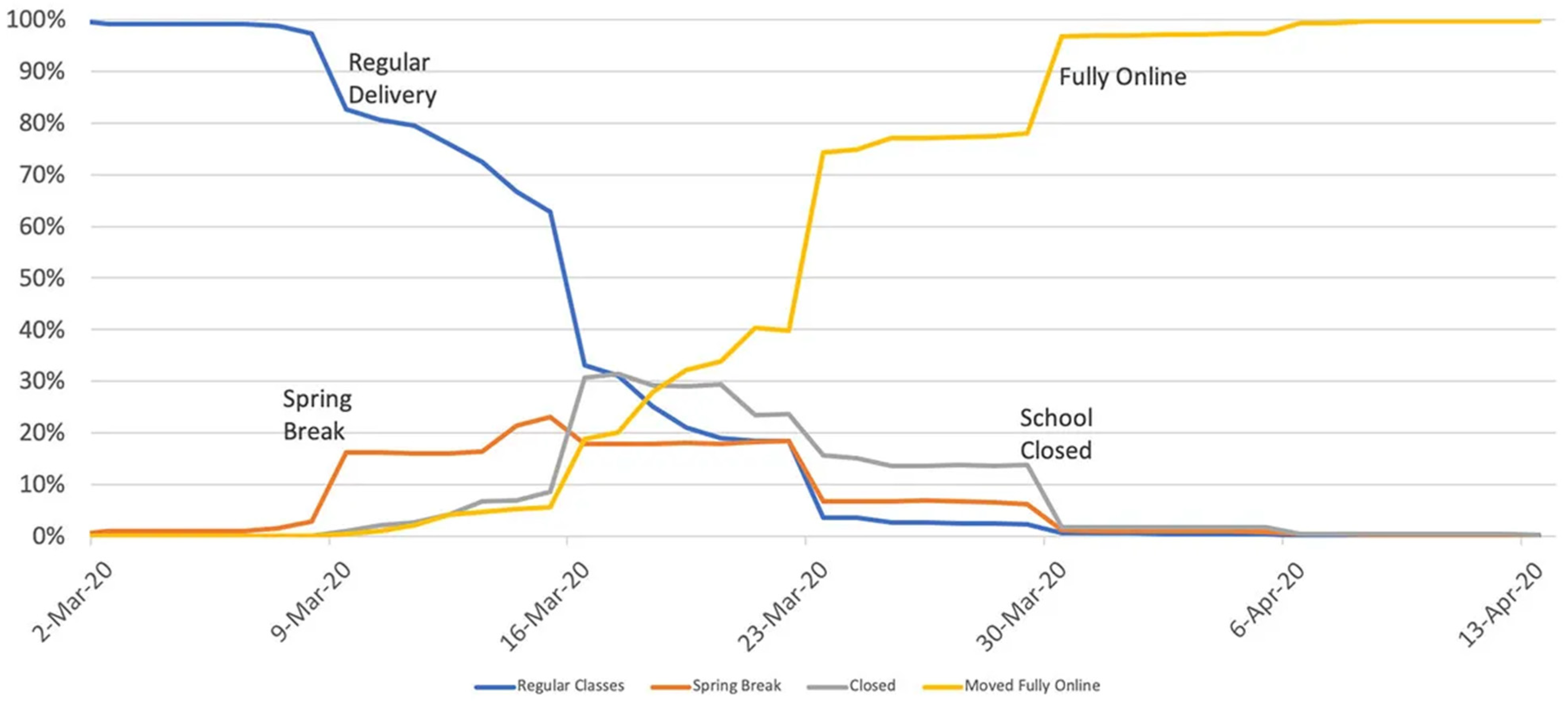
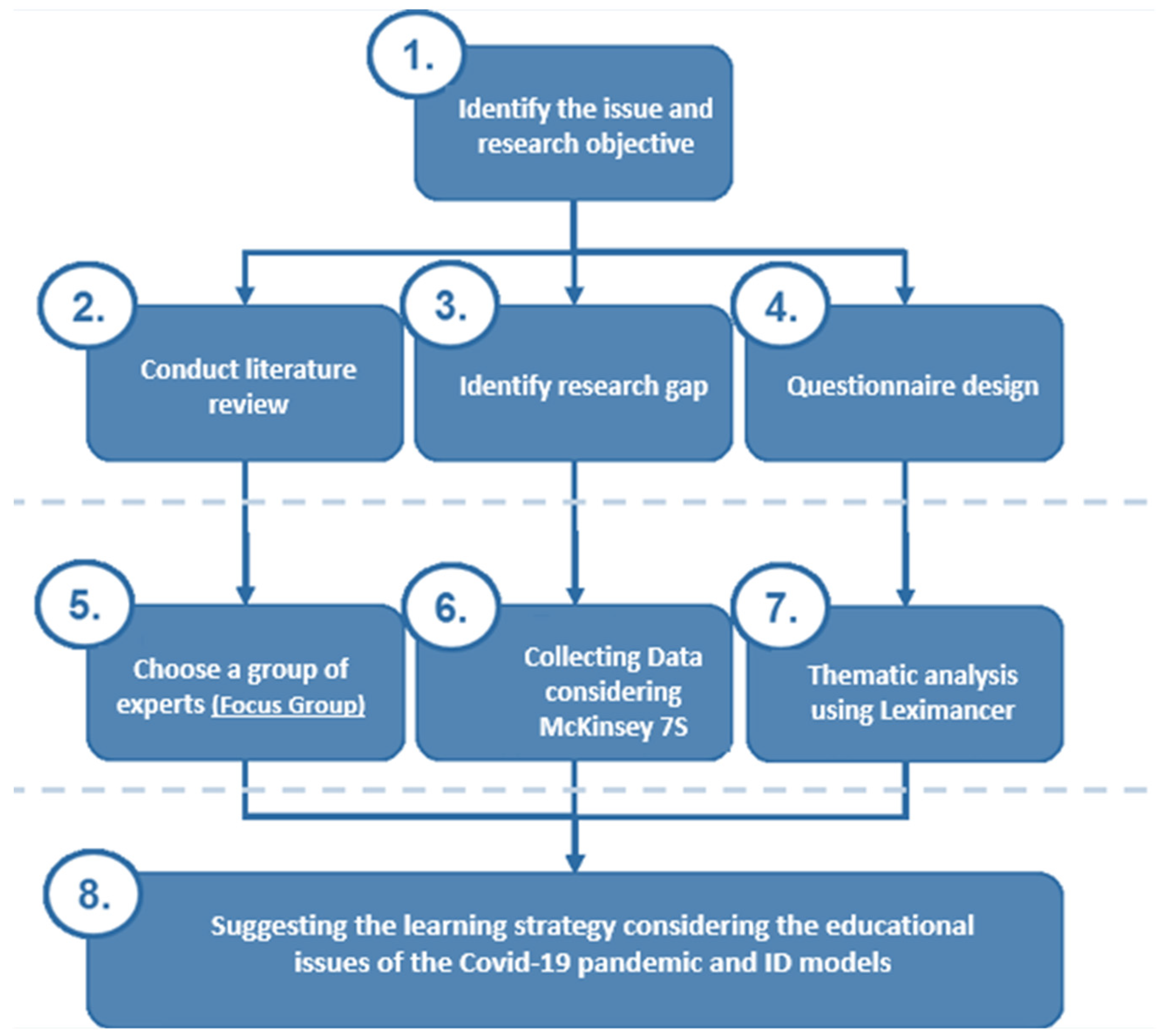
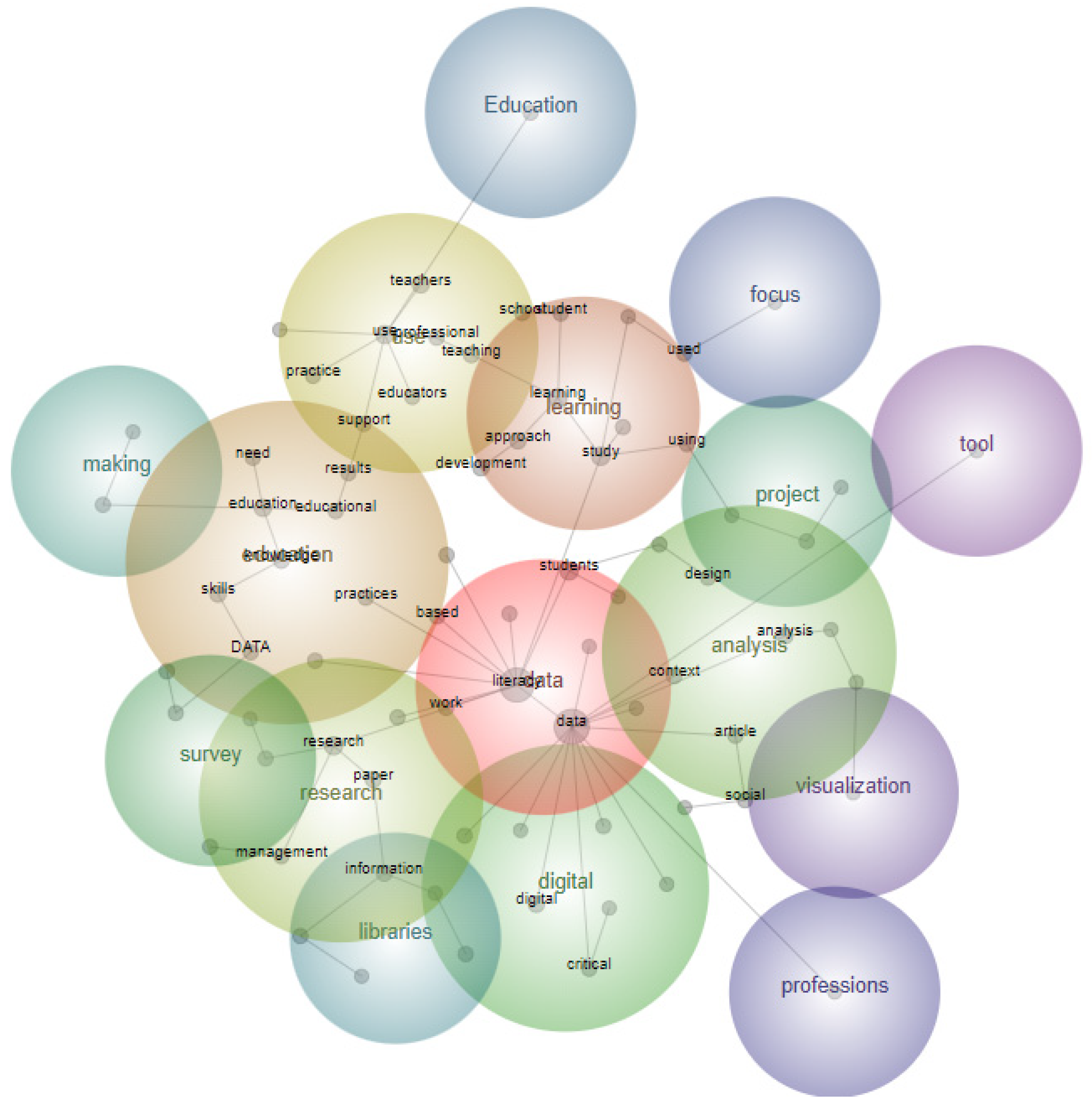
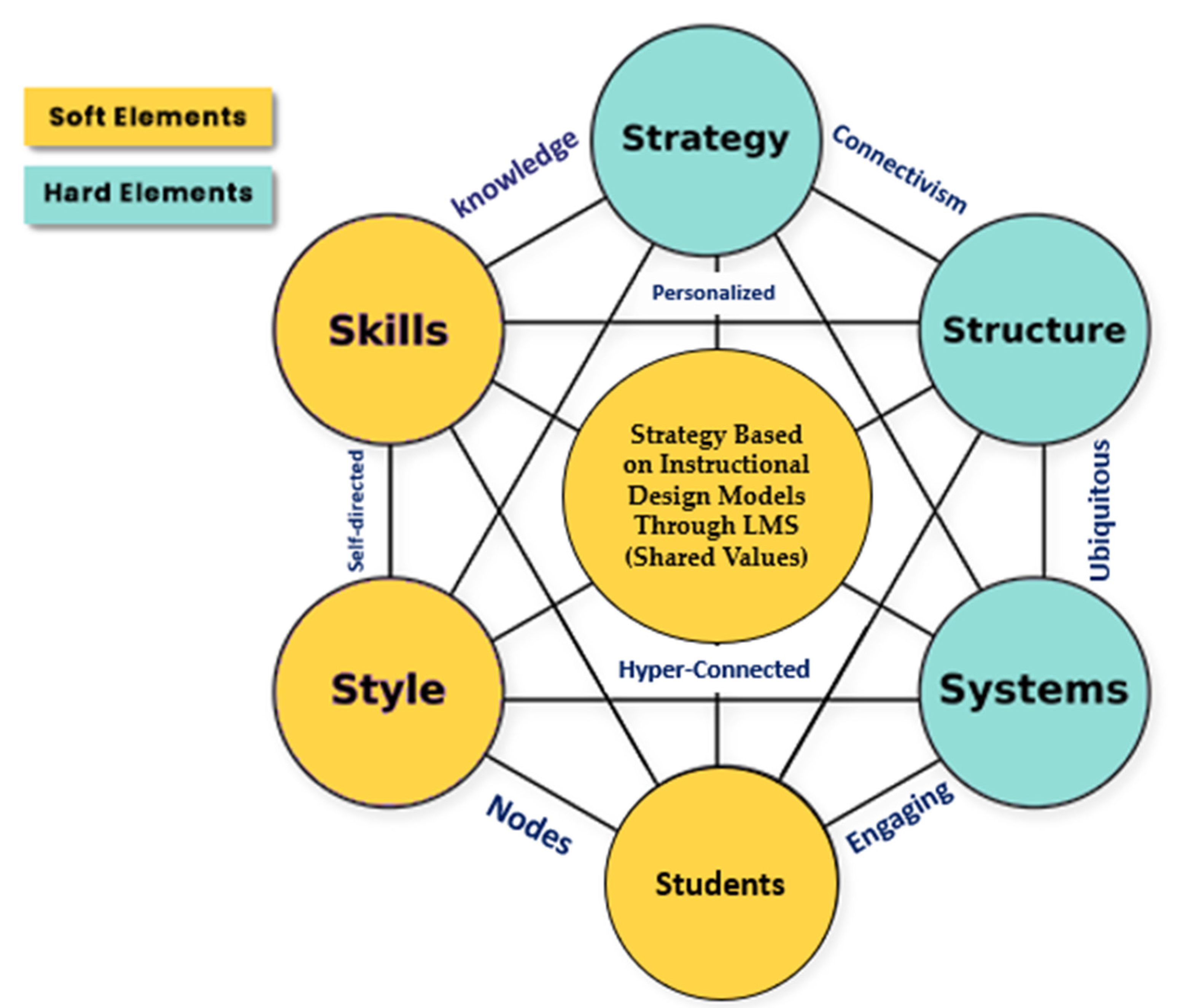
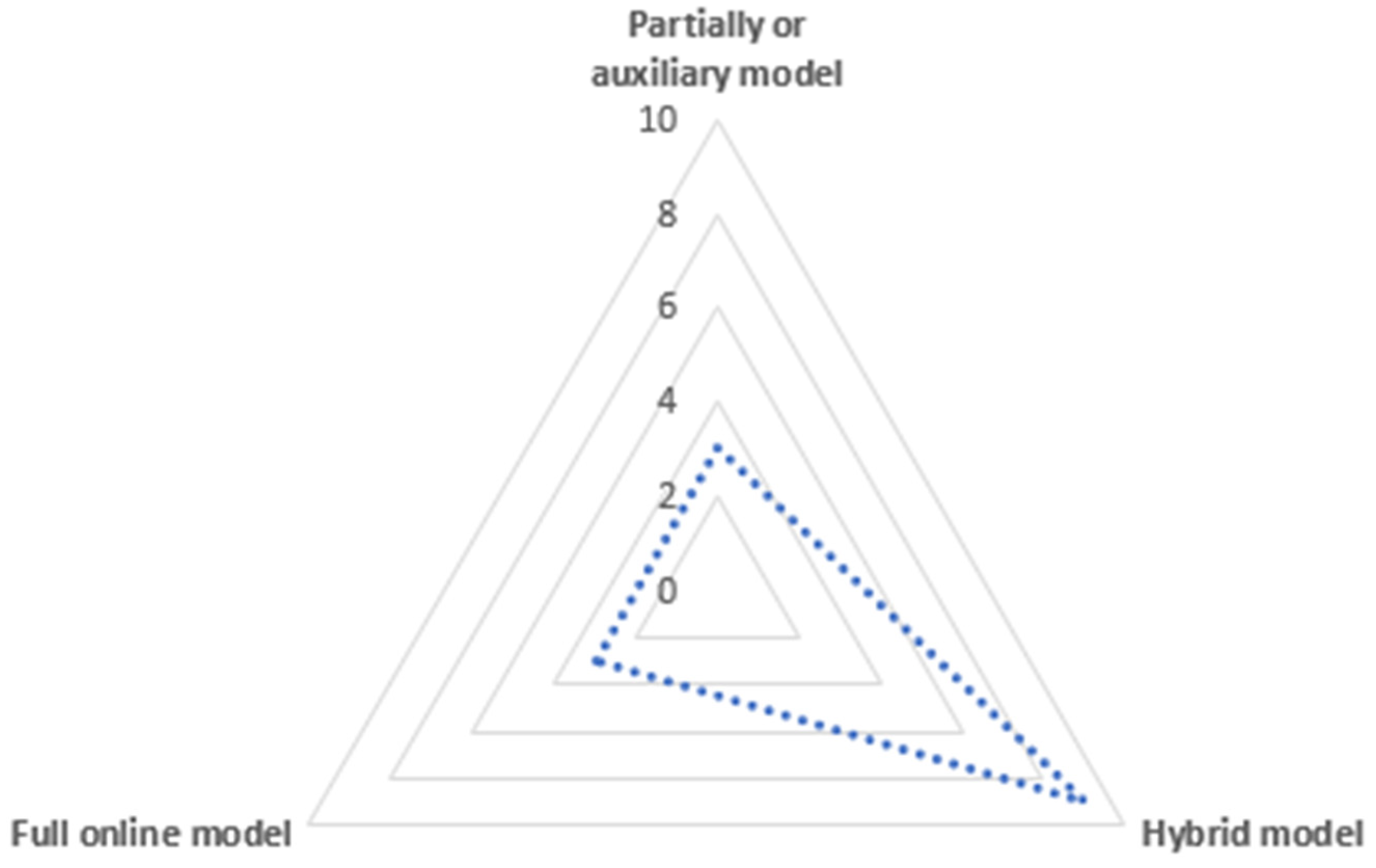
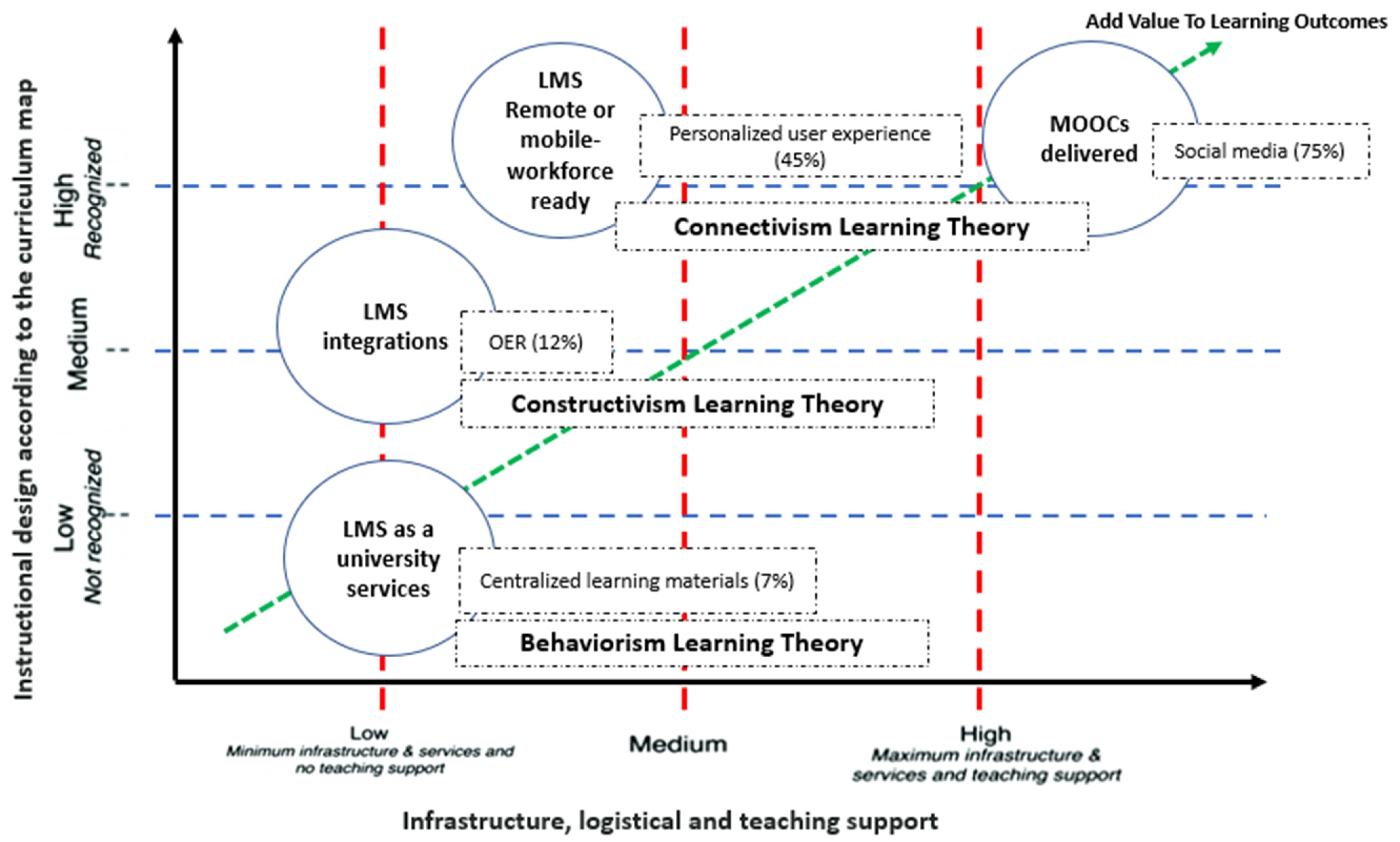
Publisher’s Note: MDPI stays neutral with regard to jurisdictional claims in published maps and institutional affiliations. |
© 2022 by the authors. Licensee MDPI, Basel, Switzerland. This article is an open access article distributed under the terms and conditions of the Creative Commons Attribution (CC BY) license (https://creativecommons.org/licenses/by/4.0/).
Share and Cite
Aldosari, A.M.; Eid, H.F.; Chen, Y.-P.P. A Proposed Strategy Based on Instructional Design Models through an LMS to Develop Online Learning in Higher Education Considering the Lockdown Period of the COVID-19 Pandemic. Sustainability 2022, 14, 7843. https://doi.org/10.3390/su14137843
Aldosari AM, Eid HF, Chen Y-PP. A Proposed Strategy Based on Instructional Design Models through an LMS to Develop Online Learning in Higher Education Considering the Lockdown Period of the COVID-19 Pandemic. Sustainability. 2022; 14(13):7843. https://doi.org/10.3390/su14137843
Chicago/Turabian StyleAldosari, Aljawharah M., Hala F. Eid, and Yi-Ping Phoebe Chen. 2022. "A Proposed Strategy Based on Instructional Design Models through an LMS to Develop Online Learning in Higher Education Considering the Lockdown Period of the COVID-19 Pandemic" Sustainability 14, no. 13: 7843. https://doi.org/10.3390/su14137843
APA StyleAldosari, A. M., Eid, H. F., & Chen, Y.-P. P. (2022). A Proposed Strategy Based on Instructional Design Models through an LMS to Develop Online Learning in Higher Education Considering the Lockdown Period of the COVID-19 Pandemic. Sustainability, 14(13), 7843. https://doi.org/10.3390/su14137843






